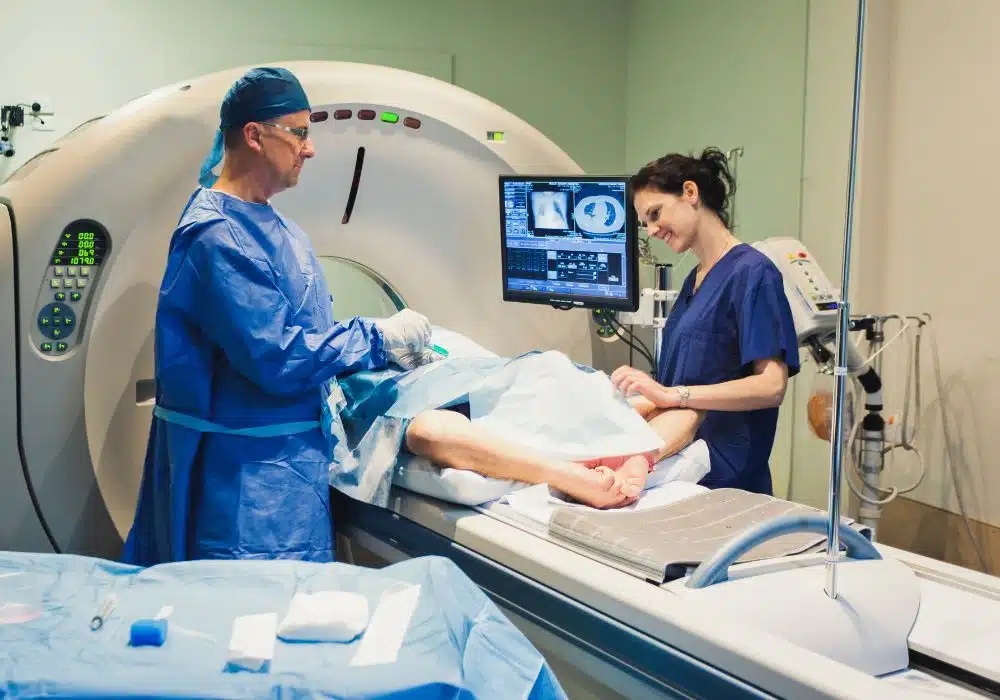Medical tests play a crucial role in any claim for maritime injuries. When a maritime or offshore worker becomes injured and unable to work because of an on-the-job accident, they have a right to seek maintenance and cure benefits until they reach a point of Maximum Medical Improvement (“MMI”). If the accident was caused by the negligence of an employer or the “unseaworthiness ” of a vessel, they may be able to seek additional compensation for their work-related injuries. However, to receive these benefits and compensation, they will need medical evidence of their injuries.

Maritime and Offshore Accident Injuries
Maritime and offshore accidents can result in serious, even fatal injuries:
These injuries can include:
Medical Tests Are Used To Establish The Extent Of A Maritime Worker’s Injuries
After a maritime or offshore worker is injured, a physician will perform an examination and tests to evaluate the nature and extent of their injuries:
Physical Examination
After an accident, an injured worker is given a physical examination by a doctor before any other tests are performed. The examination can consist of a visual inspection to evaluate the skin and soft tissues for swelling, bruising, abrasions, punctures, and lacerations; an assessment of neurovascular function; and an assessment of active and passive motion range. A doctor will often order additional tests to confirm or deny their diagnosis. Once they receive the results of these tests, the doctor will be able to recommend a treatment plan.
X-Rays
An X-ray study, also known as a radiograph, produces images of the structures inside a body. It is usually the first medical test performed after an injury. X-rays are useful for diagnosing and treating bone fractures, lung infections, blocked blood vessels, and foreign objects within the body. X-rays do not reveal ligament/tendon damage, nerve damage, joint damage, or lumbar disc injuries; other tests are required to diagnose these conditions.
CT/MRI Scans
If an X-ray fails to reveal an injury, an MRI (magnetic resonance imaging) or CT (computed tomography) scan may be performed. MRIs and CT scans can capture much more detailed images of internal body structures than a normal X-ray examination.
CT scans, also known as CAT scans, are a form of X-ray imaging that is used to diagnose bone fractures, organ injuries, tumors, and internal bleeding. MRI scans use radio waves to create images of the inside of a patient’s body. MRI scans are used to diagnose soft tissue, nerve, inflammation, infections, and internal organ injuries.
Blood Testing
Blood tests are used to diagnose illnesses caused by exposure to toxic materials and other environmental hazards. These include tests for toxic metals, mercury, heavy metals, and carbon monoxide poisoning. Whole blood, serum, and plasma are used for testing; urine samples may be required as well.
Electromyography (EMG)
If a physician suspects you may be suffering from muscle or nerve damage, they may order you to undergo an electromyography (EMG) procedure. An EMG is used to assess the condition of a muscle and the nerve cells (motor neurons) that control it. An EMG can reveal muscle and nerve dysfunction, as well as issues with nerve-to-muscle signal transmission.
Vision and Hearing Tests
There are many types of vision and hearing tests that can be used to determine the extent of injury caused by an eye or ear trauma. Orbital fractures and other eye trauma injuries may require an examination by an oculoplastic specialist.
Other Medical Tests
While the above are some of the most common medical tests used to diagnose maritime injuries, there are many, many others, including:
It’s important to the success of your claim for maintenance and cure benefits and any other maritime injury claims that may be needed that you follow through with testing and treatment prescribed by your medical team.
Lambert Zainey Has Been Protecting the Rights of Injured Maritime and Offshore Workers for Over 40 Years
If you’re unable to work due to an on-the-job maritime injury, don’t agree to a settlement or make a recorded statement to an insurance company until you’ve spoken with an experienced offshore accident attorney. They are here to protect your rights and ensure you receive the total compensation you are due for the damages caused by your injuries. The insurance company isn’t.
An attorney will be able to assist you in gathering the evidence to support your claim, determine the extent of your damages, negotiate with the insurance company, represent you in court, and help you avoid any mistakes that could affect your settlement.
Who you choose to represent you in a maritime injury case will have a big impact on the amount of compensation you receive. The law firm of Lambert Zainey Smith & Soso has been protecting the rights of injured offshore and maritime workers since the 1970s. Our team of highly recognized New Orleans maritime accident attorneys has recovered over a billion dollars in settlements for our clients.
Contact us through our website or call us at (504) 581-1750 to schedule a free initial consultation with a Louisiana maritime injury lawyer.
